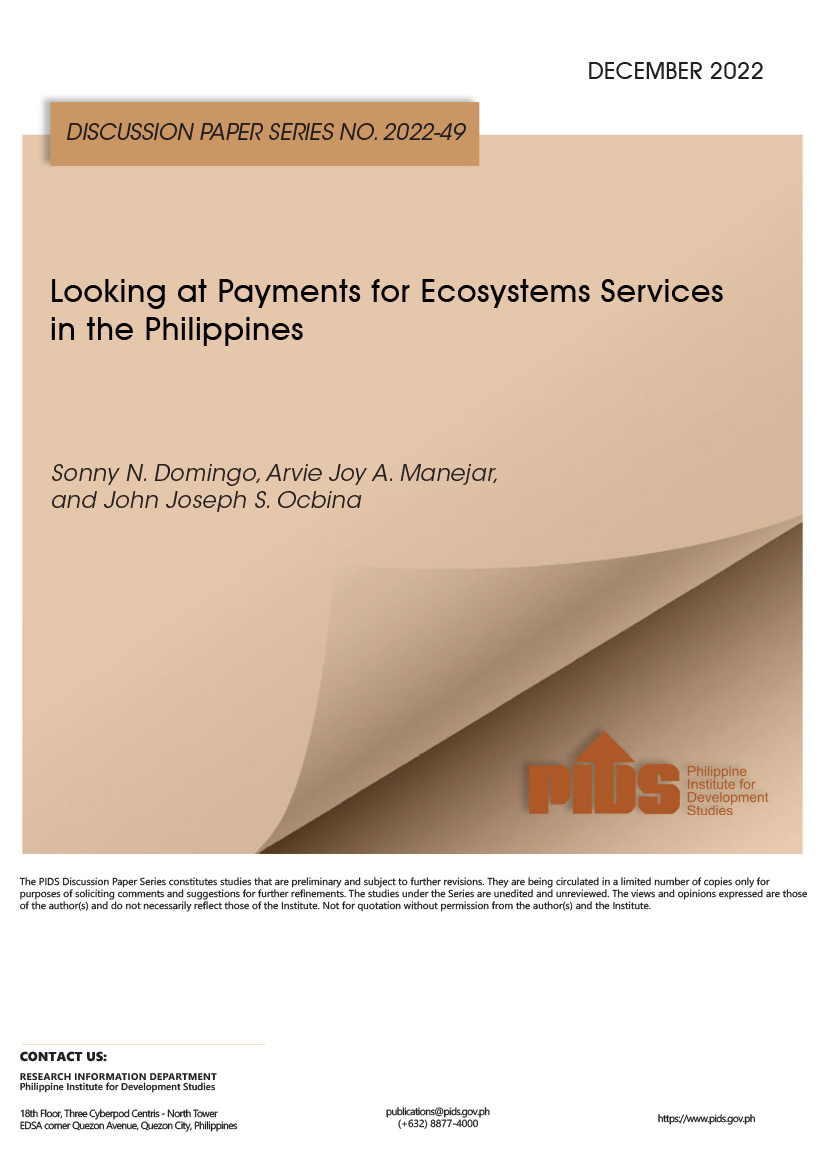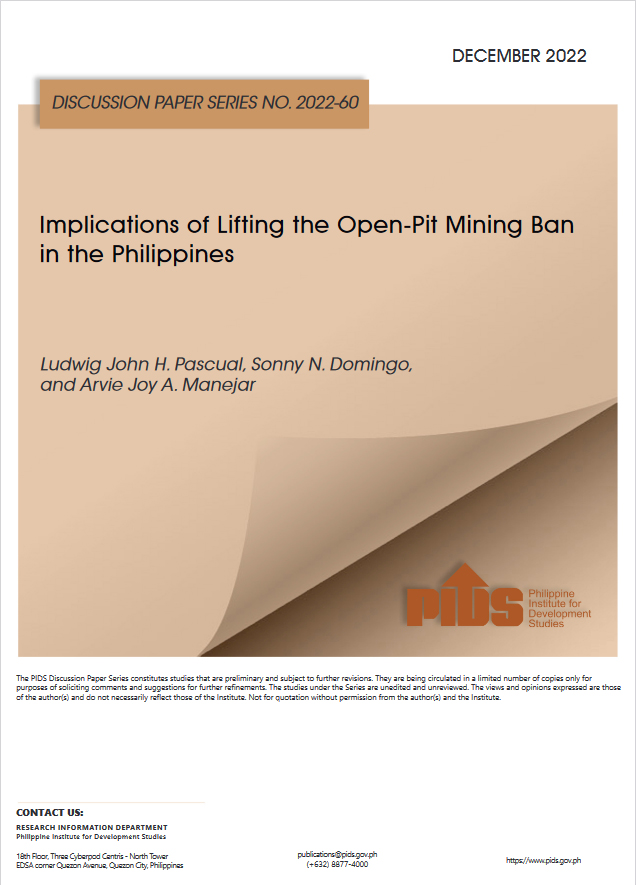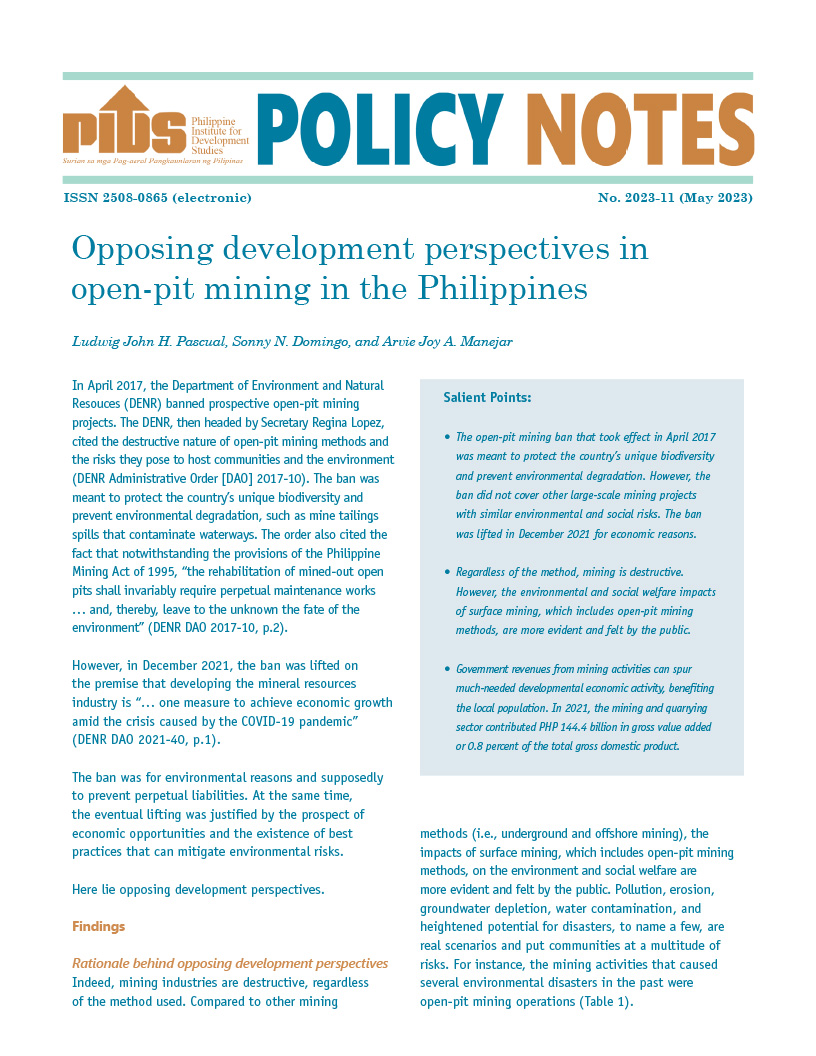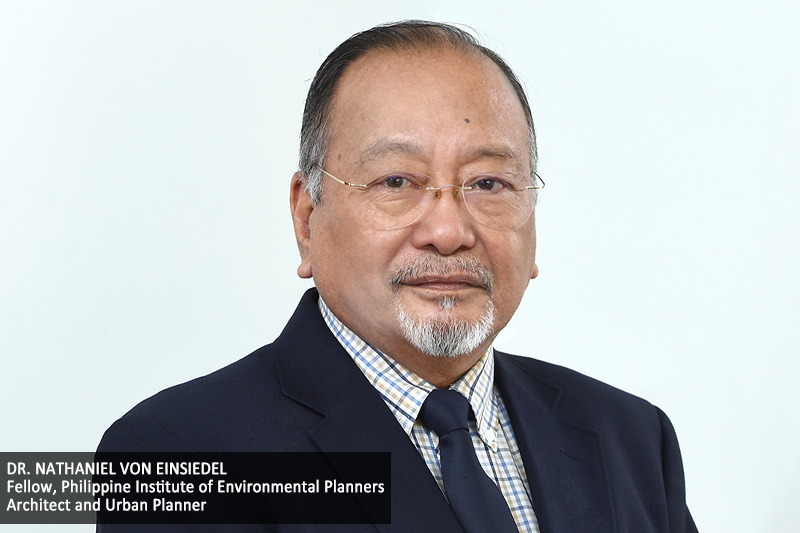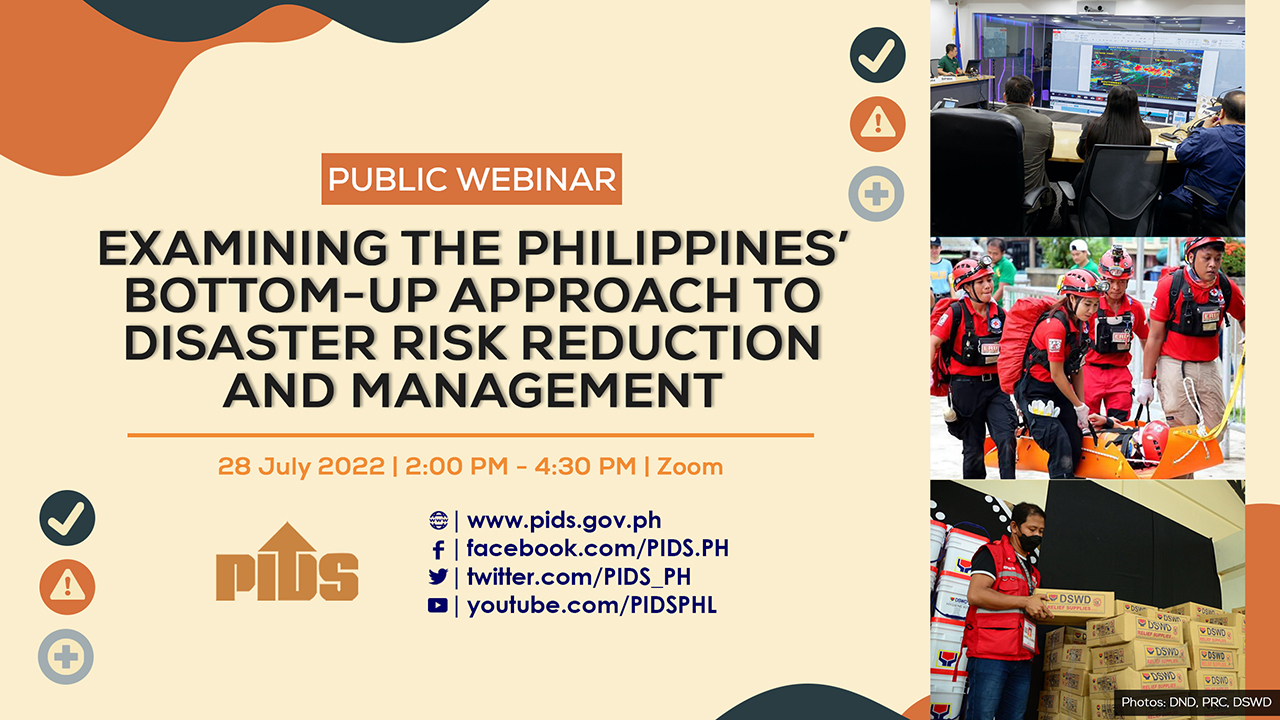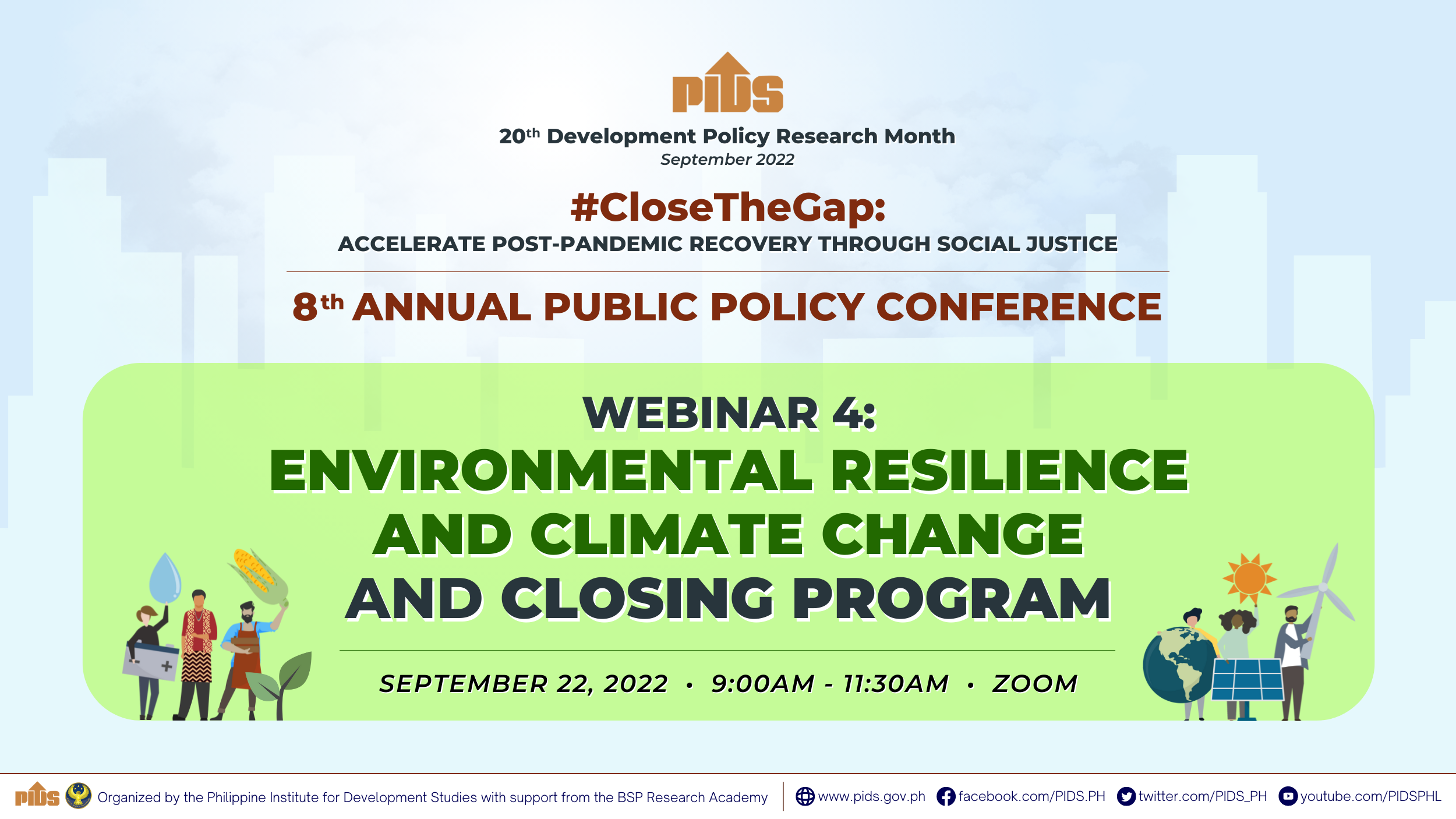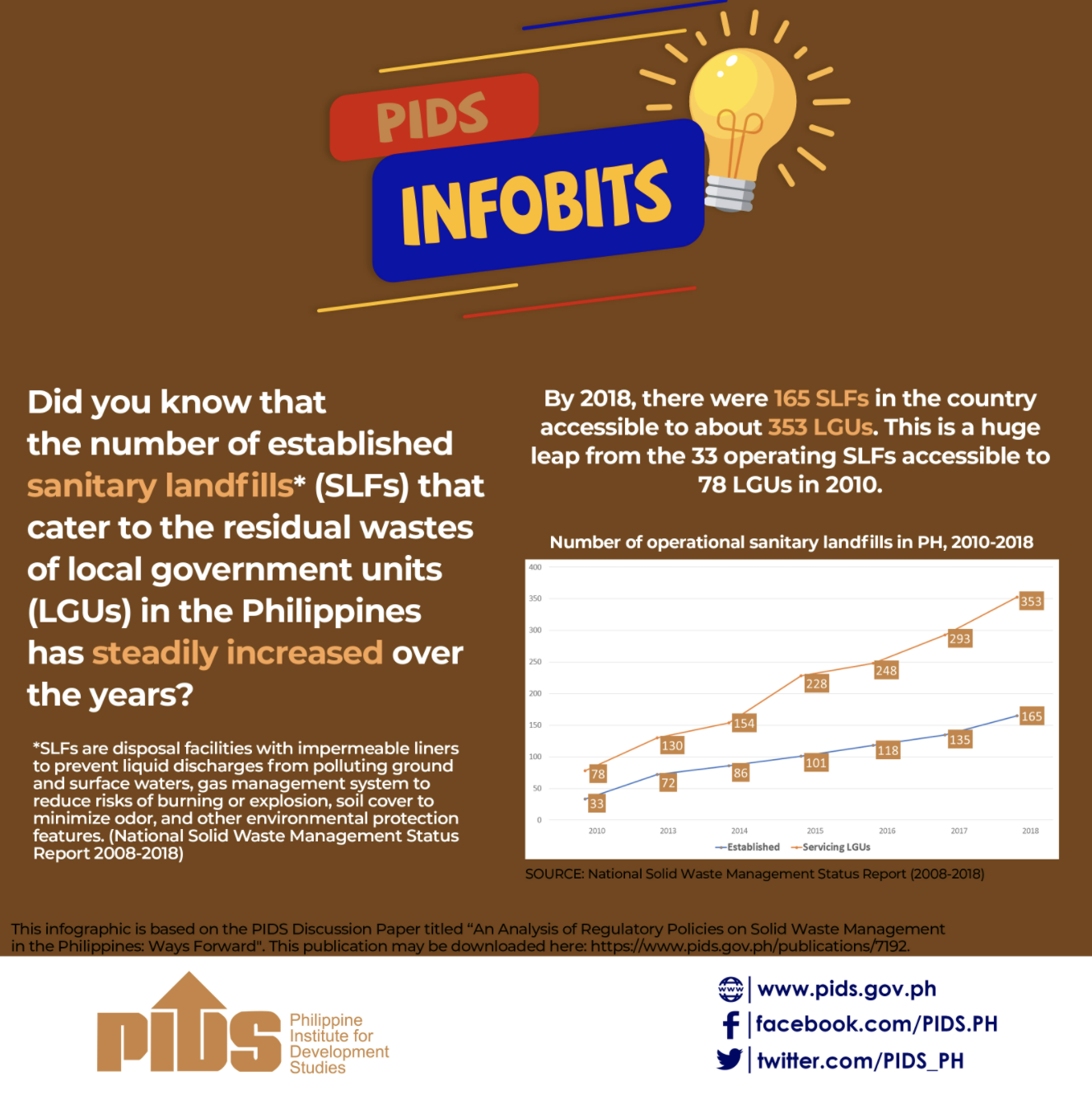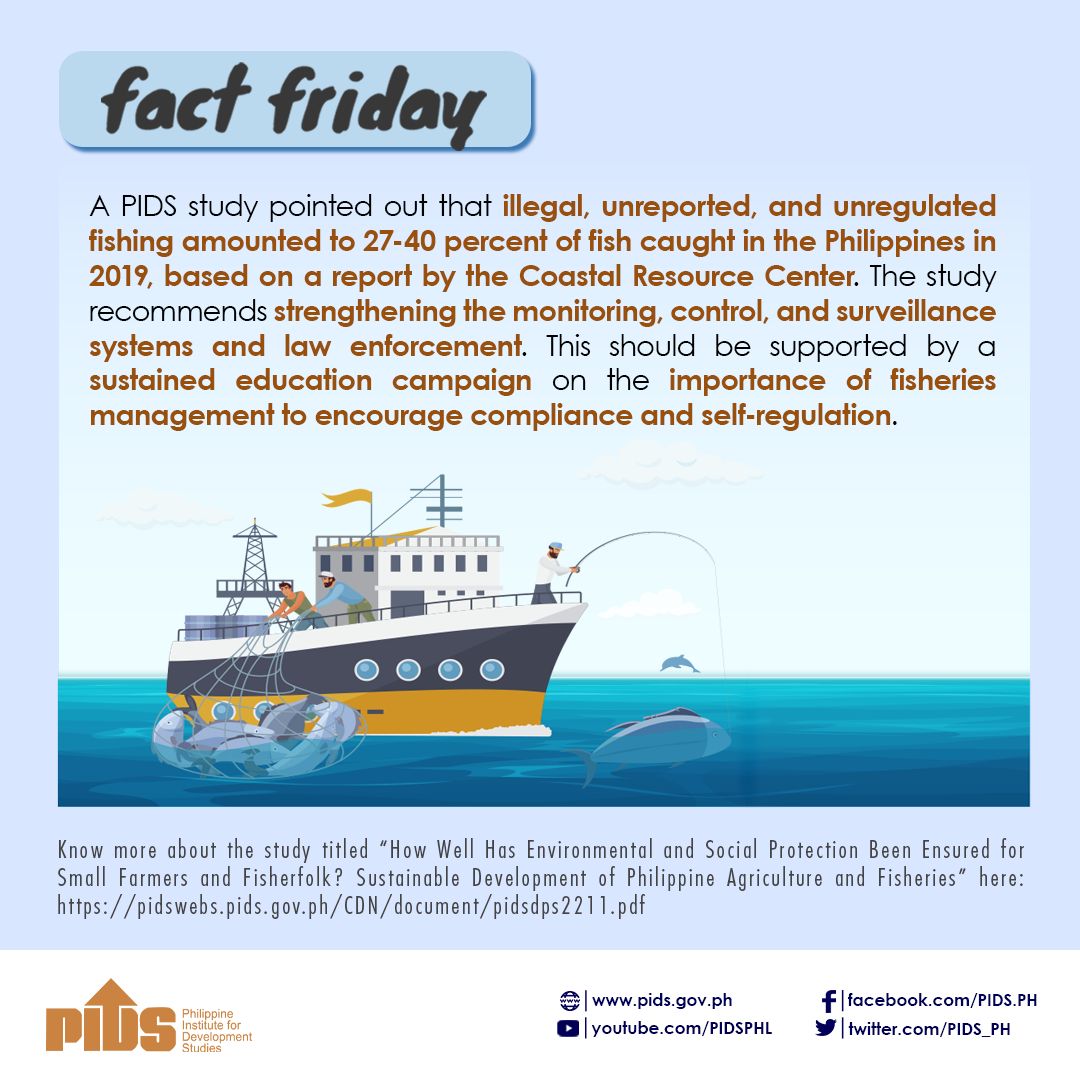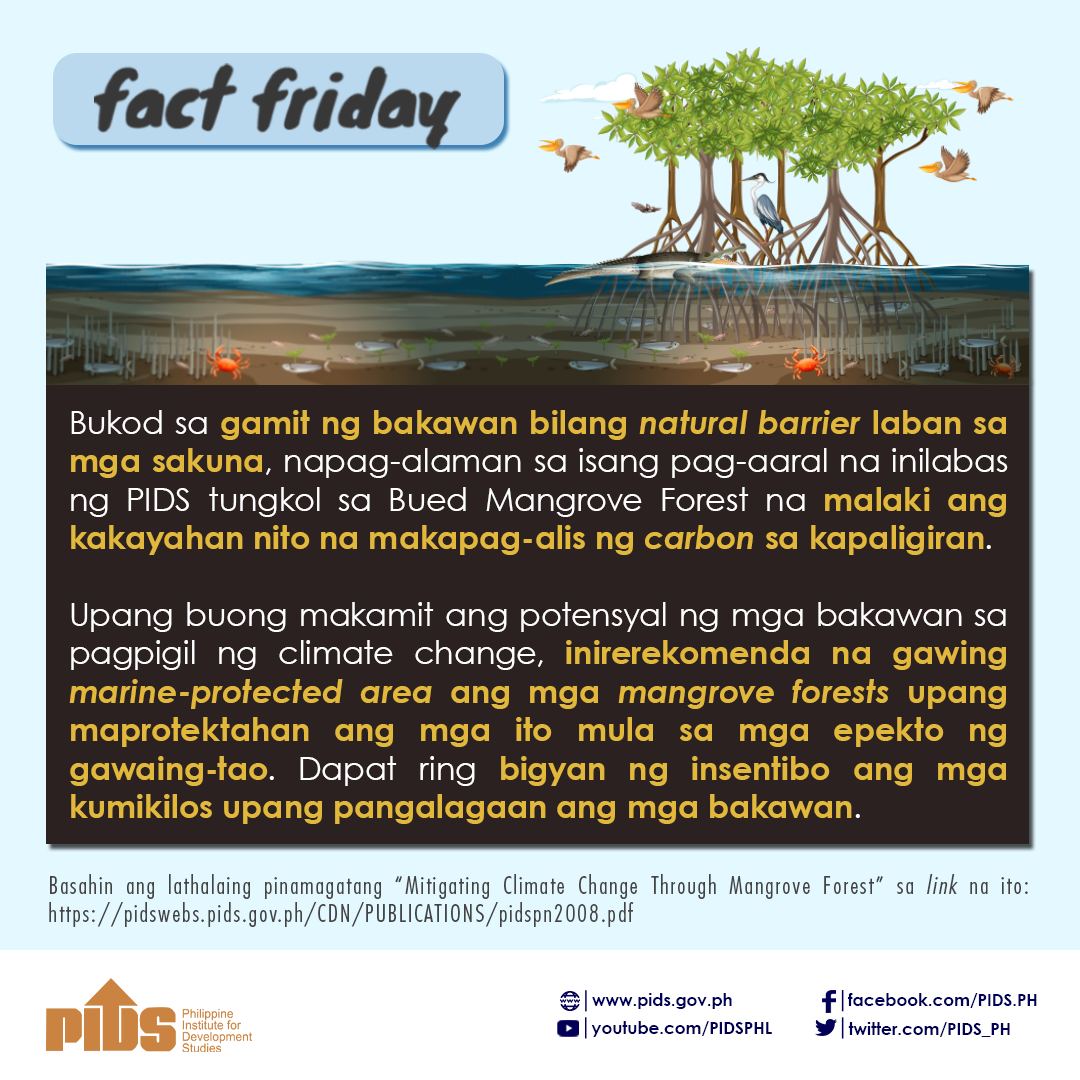The government should create an agency focused on reforestation alone to build on the success of the National Greening Program (NGP), according to a study released by the Philippine Institute for Development Studies (Pids).
In a Policy Note, titled Taking Stock of the National Greening Program Six Years Hence, Pids research fellow Danilo C. Israel said if this is not possible, the Forest Management Bureau (FMB) of the Department of Environment and Natural Resources (DENR) must be “ultimately responsible for all reforestation initiatives.”
“The national government should place the ultimate responsibility for all reforestation initiatives on the FMB. Thus, its conversion to a bureau should be seriously studied,” Israel said.
“Alternatively, the creation of a new agency tasked only with reforestation, possibly answering directly to the president, should be considered,” he added.
Israel said this is one of the ways to boost the DENR’s reforestation and rehabilitation efforts.
Currently, the DENR hires NGP coordinators and extension officers as contractual workers to manage and run the project, which is a “double-edged sword.”
Israel said that, while their lack of security of tenure can compel them to work and meet the project targets, they are not invested in the missions and mandates of the DENR.
He said this has an impact on project management and funding, as well as monitoring corruption in NGP activities.
“The national government should strengthen the capacity of DENR personnel and POs [people’s organizations] to monitor corruption in NGP activities. For one, the implementation of an effective reward system for those who report illegal practices should be considered,” Israel said.
The program, he said, must invest in organization development and the capacity-building of the POs to reduce conflicts that could undermine the gains of the NGP.
It must also put in place incentives for communities to protect and sustain the plantations in the long run, Israel said.
These could be in the form of harvesting rights, livelihood support, mechanisms for long-term financing, such as payments for ecosystem services schemes and addressing tenure issues.
The government must also review the design of the NGP in terms of individual species and mix of tree species planted, tree spacing and other important technical parameters.
“The DENR should identify and include highly vulnerable areas in the site mapping and planning and then match species and spacing with the sites,” Israel added.
In terms of hectares covered and seedling planted, the NGP was able to meet 113 percent and 90 percent of its targets, respectively, between 2011 and 2016.
Under the NGP, 1.34 million of the 1.5 million seedlings of various tree species were planted in 1.64 million hectares of the 1.45-million hectares target open, denuded and degraded forestlands.
The program allowed the Philippines to rank fifth among the countries worldwide with the most annual forest gain between 2010 and 2015.
Data from the Food and Agriculture Organization showed the country’s annual forest gain was 240,000 hectares, representing a 3.5-percent yearly increase in forest area.
Apart from forest area gained, the NGP was able to create 3.3 million jobs and employed 462,066 in upland and rural communities as of November 2016.//
PIDS bats for creation of national greening agency

